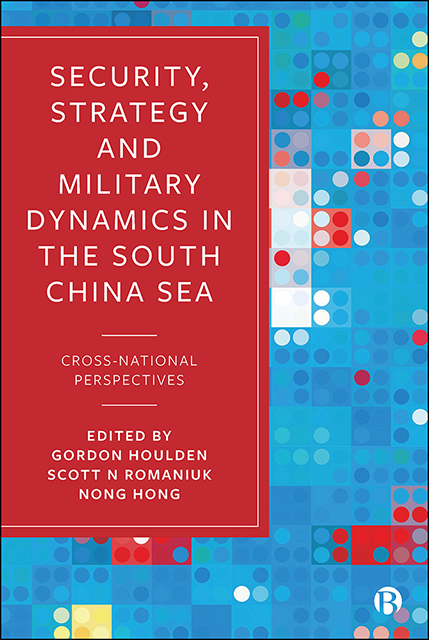Book contents
- Frontmatter
- Contents
- List of Tables
- Notes on Contributors
- Foreword
- Introduction: Strategic Challenges and Escalating Power Rivalry in the South China Sea
- 1 Between Competition and War: Complex Security Overlay and the South China Sea
- 2 The South China Sea as an Echo Chamber of Chinese Foreign and Security Policy
- Part I Claimants of the Contested South China Sea
- Part II Non-Claimants in Southeast Asia
- Part III Quadrilateral Security Dialogue States
- Part IV Non-Claimants in Europe and Eurasia
- Conclusion: Looking over the Horizon – Prospects for Settlement of the South China Sea Dispute?
- Index
Foreword
Published online by Cambridge University Press: 13 April 2023
- Frontmatter
- Contents
- List of Tables
- Notes on Contributors
- Foreword
- Introduction: Strategic Challenges and Escalating Power Rivalry in the South China Sea
- 1 Between Competition and War: Complex Security Overlay and the South China Sea
- 2 The South China Sea as an Echo Chamber of Chinese Foreign and Security Policy
- Part I Claimants of the Contested South China Sea
- Part II Non-Claimants in Southeast Asia
- Part III Quadrilateral Security Dialogue States
- Part IV Non-Claimants in Europe and Eurasia
- Conclusion: Looking over the Horizon – Prospects for Settlement of the South China Sea Dispute?
- Index
Summary
For well over a hundred years, the South China Sea (SCS) has been a theatre for sovereignty disputes and naval rivalry. There are long-standing disputes among its surrounding states over sovereignty to islands, notably the Paracel and Spratly island groups, and Scarborough Shoal. Since the end of the Second World War, when states began to expand their territorial waters and demand rights to their continental shelf, there has also been conflict concerning overlapping claims to maritime zones. And naval power has shifted between China, Japan, Russia, European colonial empires, and the United States (US).
The stakes of the sovereignty disputes rose considerably in the 1970s, when oil discoveries were made, more islands were occupied or conquered, and the 3rd United Nations Convention on the Law of the Sea (UNCLOS 3) adopted the principle of a 200 nautical mile exclusive economic zone (EEZ). In its famously vague article 121.3, UNCLOS failed to resolve if very small islands, rocks or reefs can be used as basis for generating EEZ and continental shelf claims. In 2016, when an Arbitral Tribunal in the Philippines v. China case sought to resolve this issue, its ruling was not accepted by either Beijing or Taipei (Taiwan occupies the largest Spratly island, Yannhuei Song, Chapter 4).
Since UNCLOS 3 there is also a long-standing dispute over freedom of navigation, pitting some of the coastal states against the world's leading naval powers and small commercial states. While the latter group stands for a principle of total freedom for both civilian and military navigation in the EEZs of other states, seeing them as “international waters,” the former group reserves a right in their national legislation to inhibit military reconnaissance and exercises in their EEZs.
Only a few of the SCS's boundary disputes have been resolved, and there is a constant risk that incidents related to fisheries, oil exploration or naval and aerial operations will escalate and lead to confrontation. This risk has most likely increased with the proliferation of weapons systems – precision-guided missiles, aircraft, naval surface vessels, submarines, drones (see Scott N. Romaniuk and Tobias Burgers, Chapter 2) – and also the expansion of coast guard and fishing fleets.
- Type
- Chapter
- Information
- Security, Strategy, and Military Dynamics in the South China SeaCross-National Perspectives, pp. xiii - xviPublisher: Bristol University PressPrint publication year: 2021



